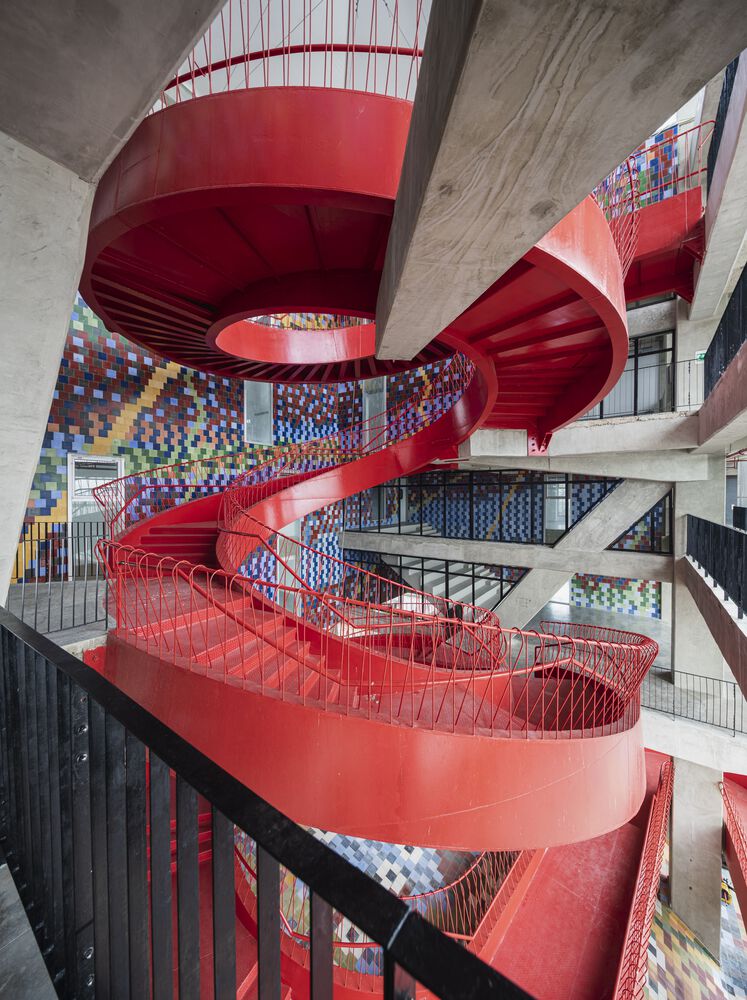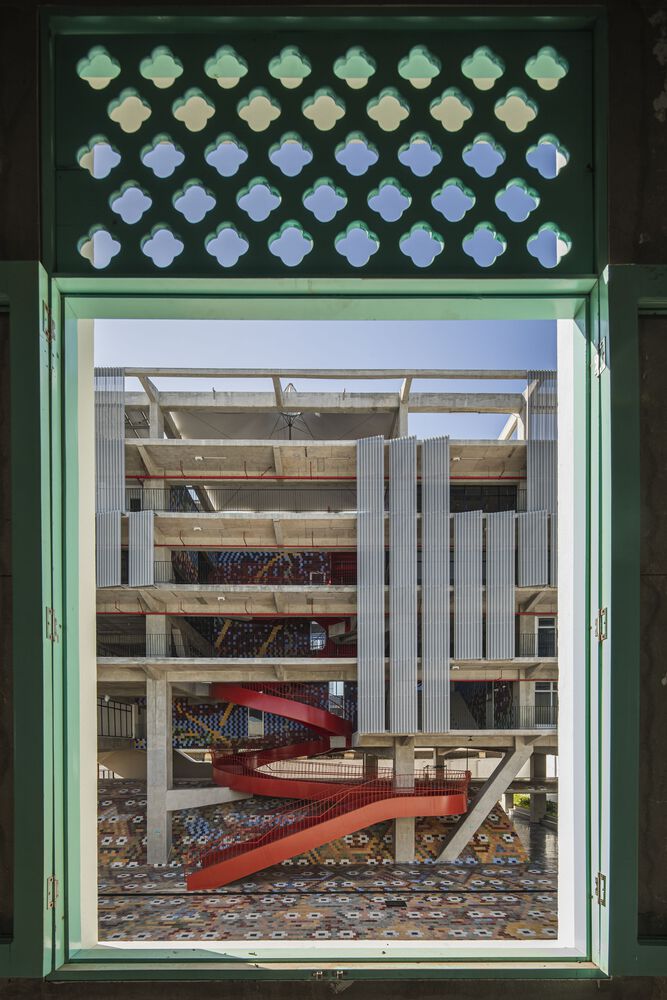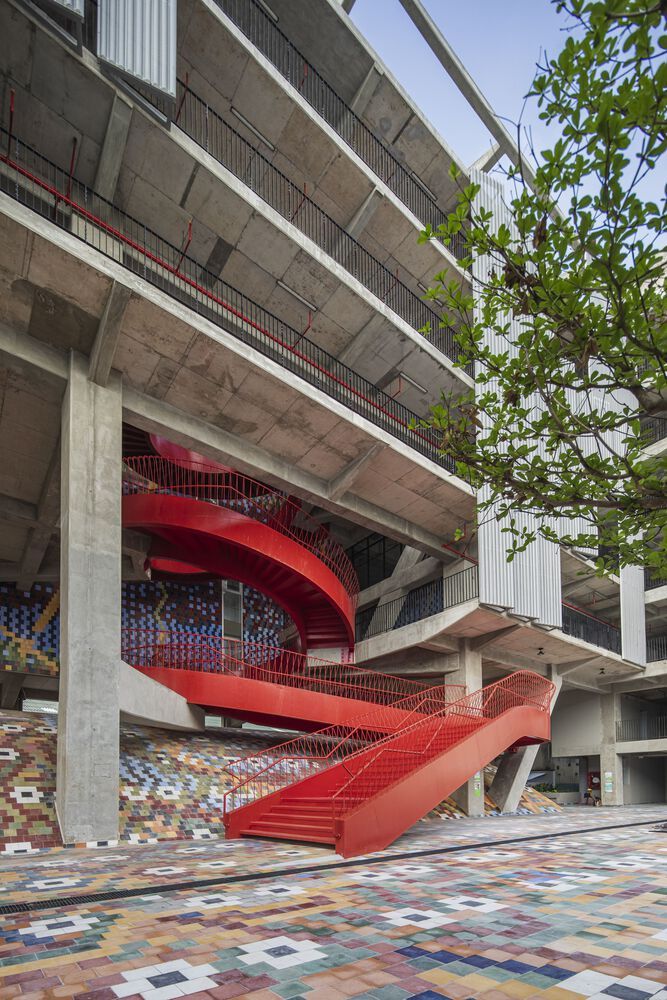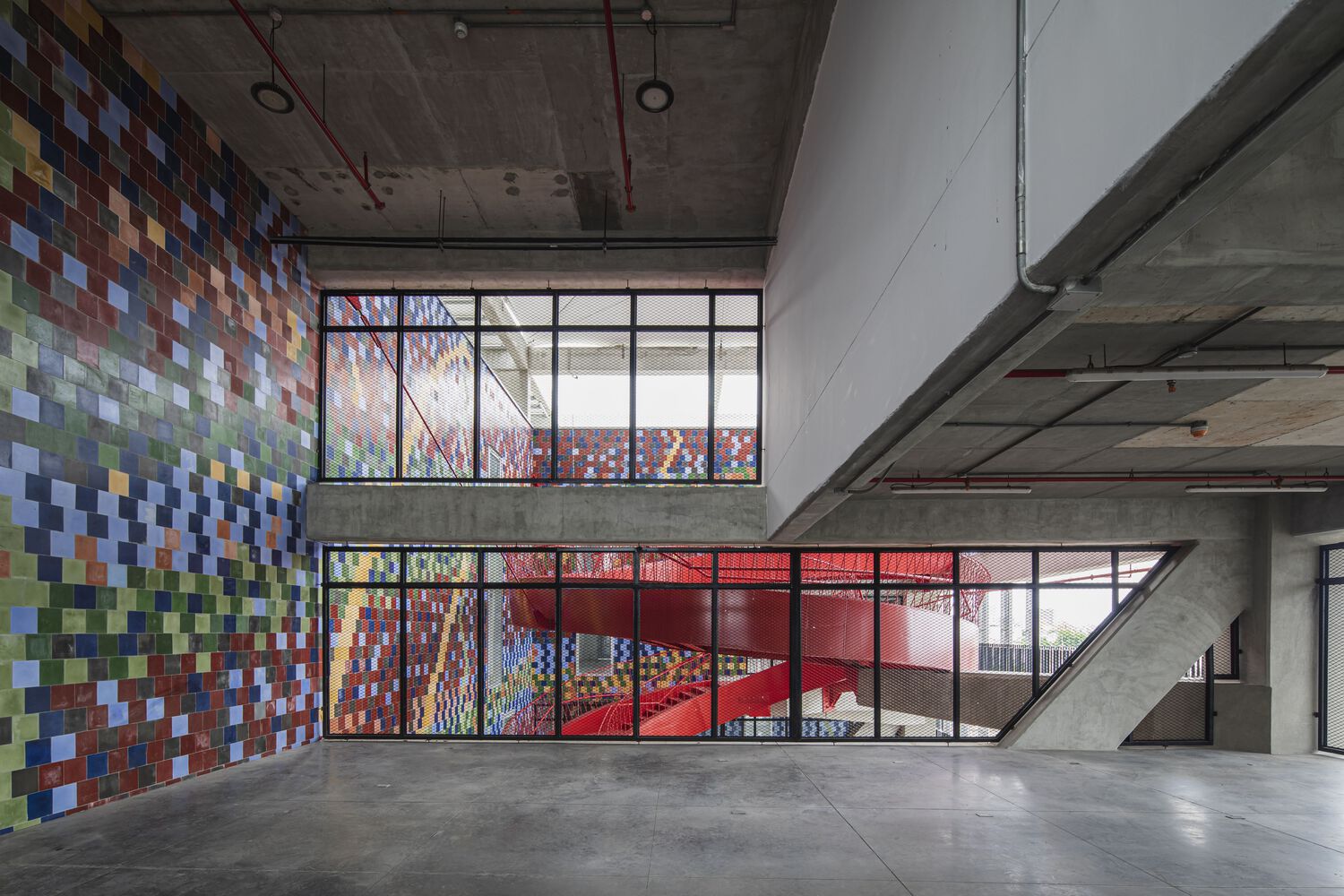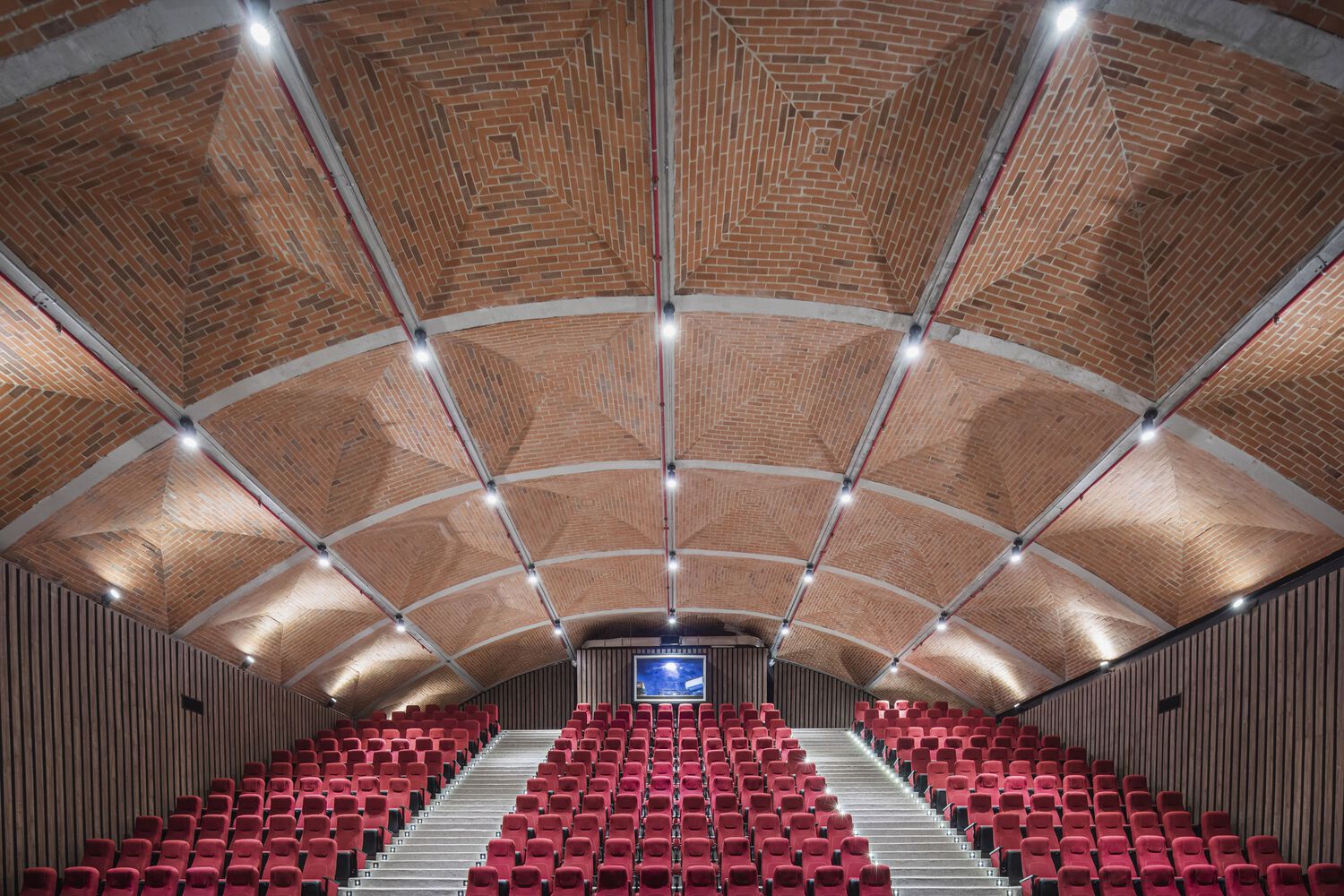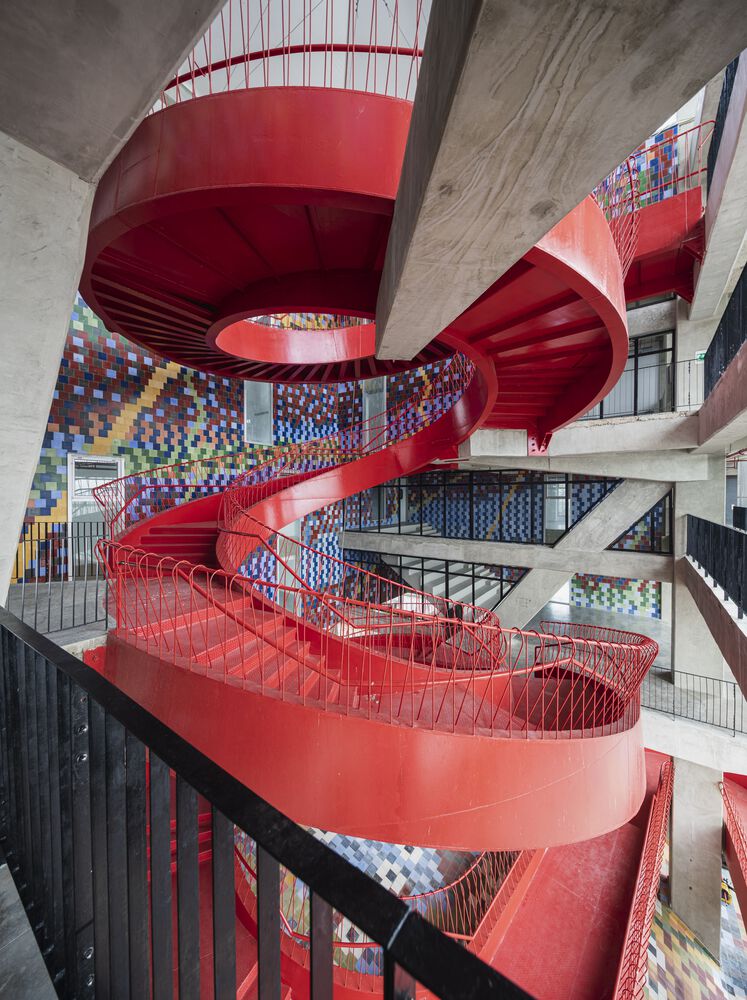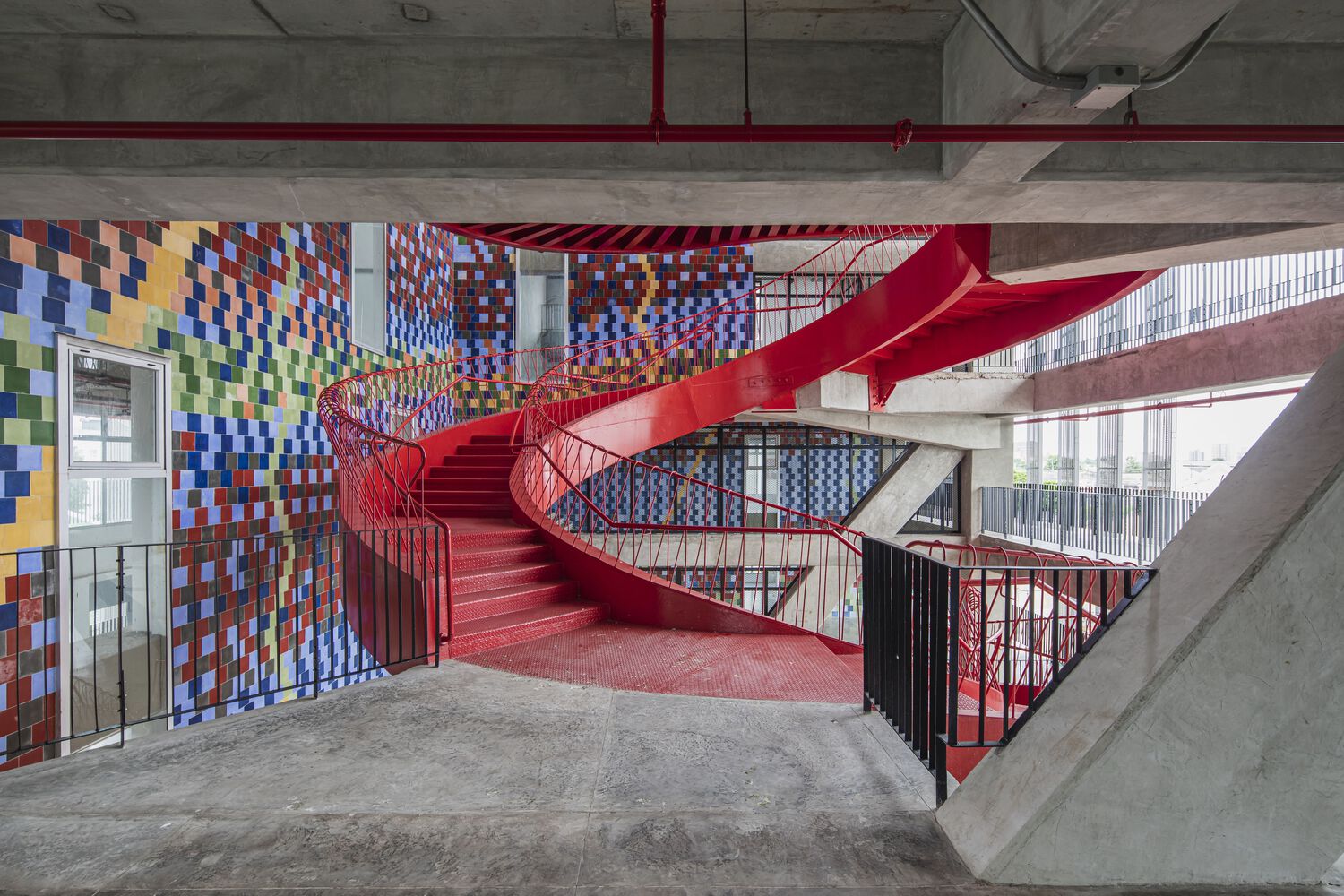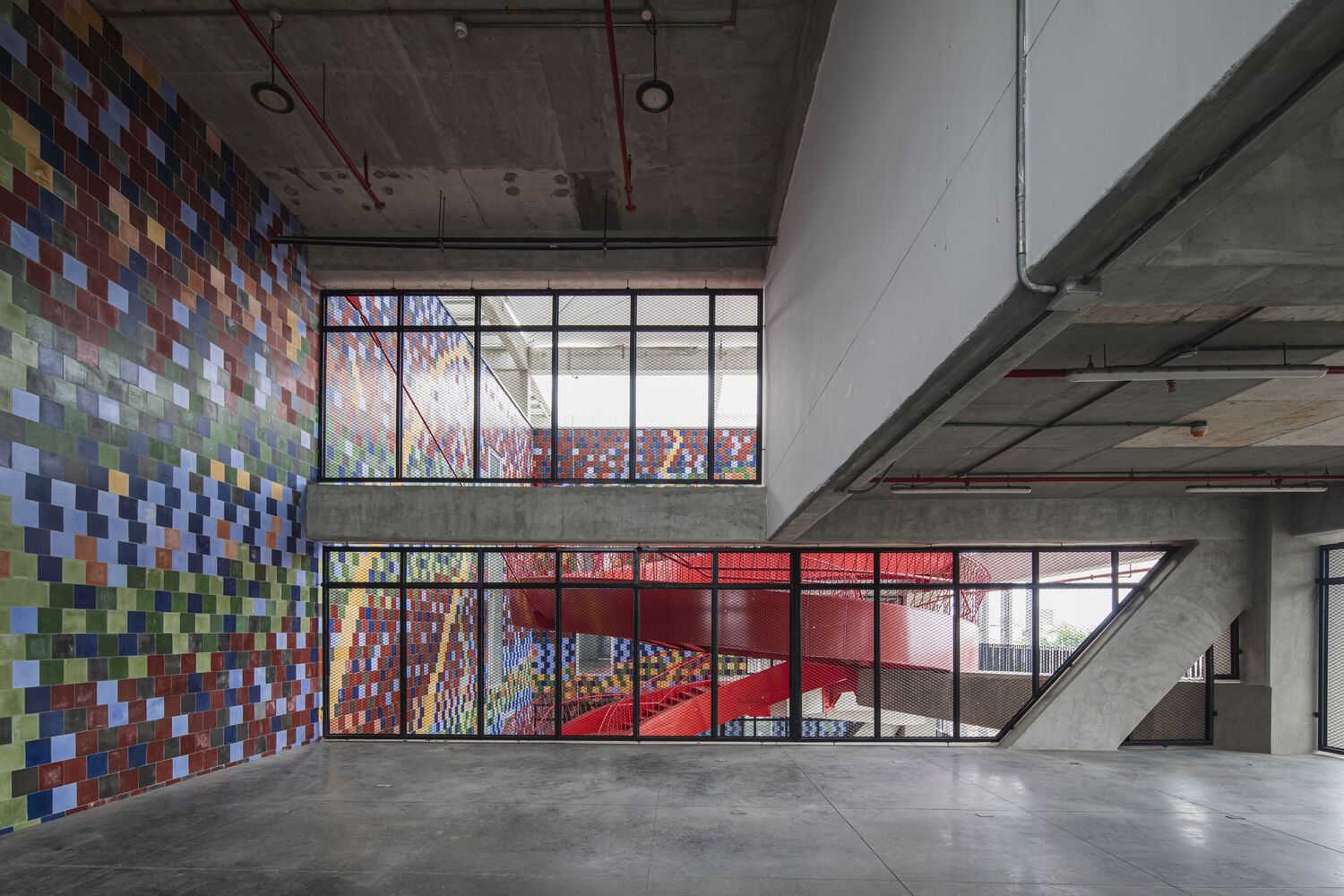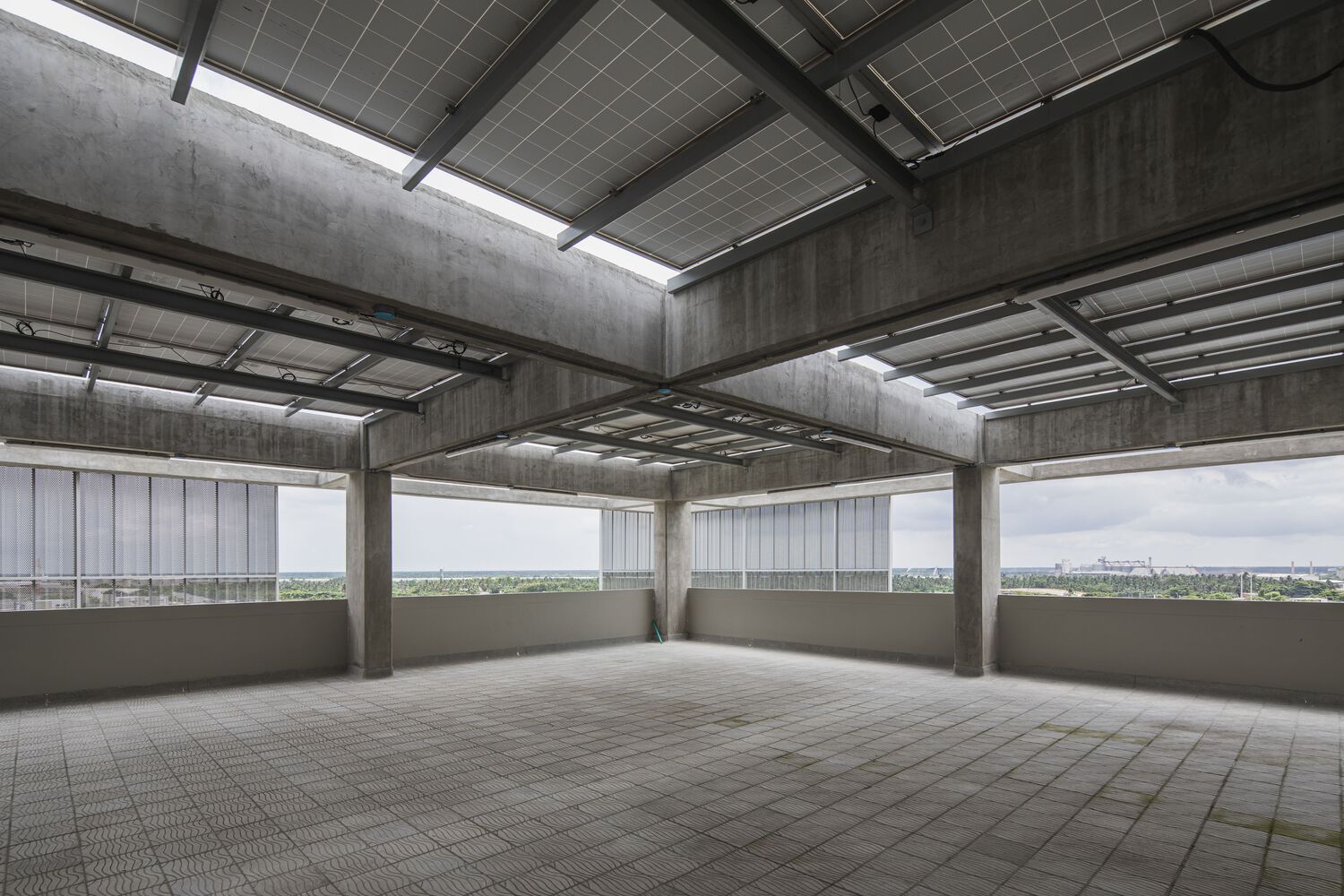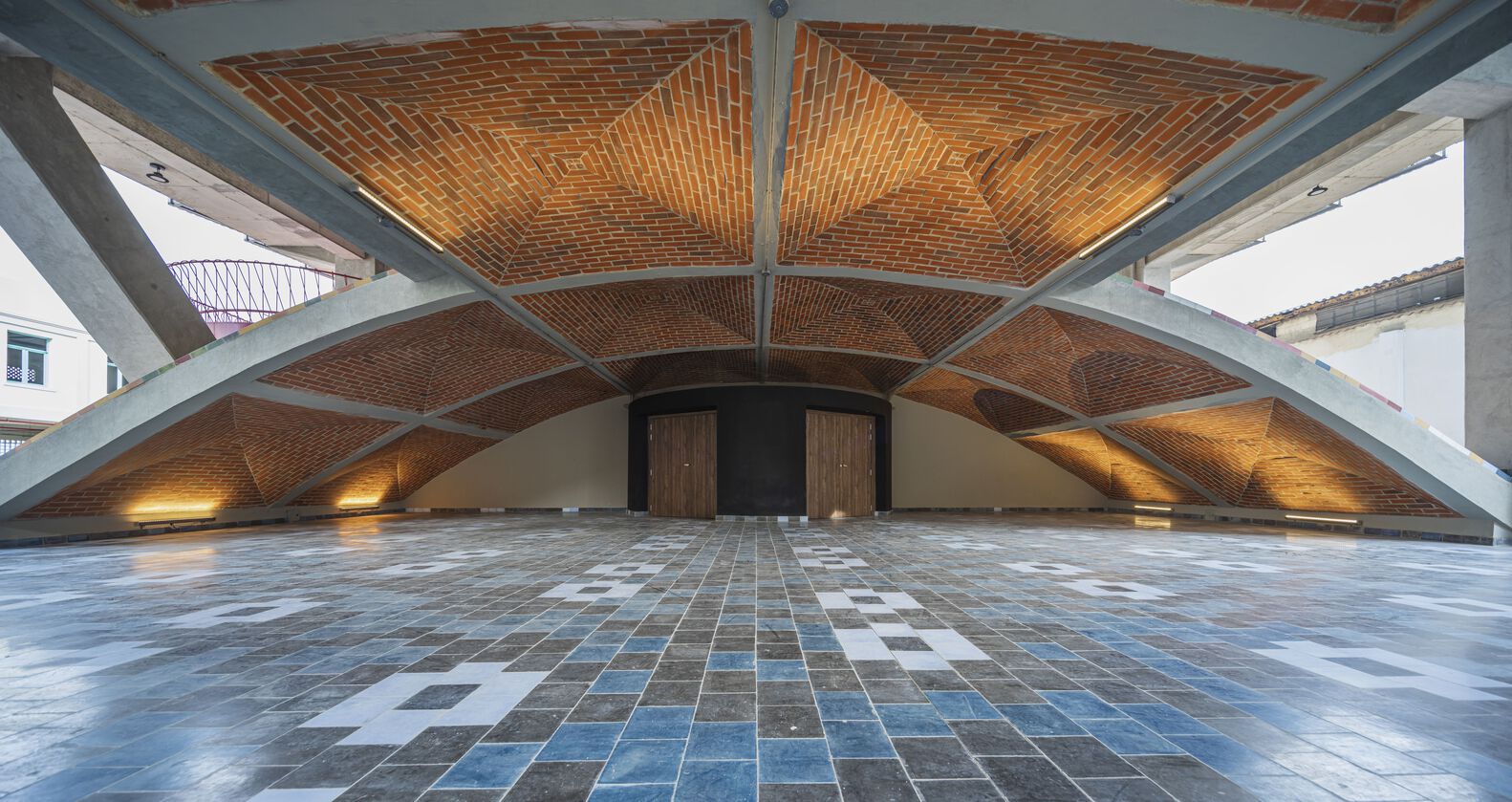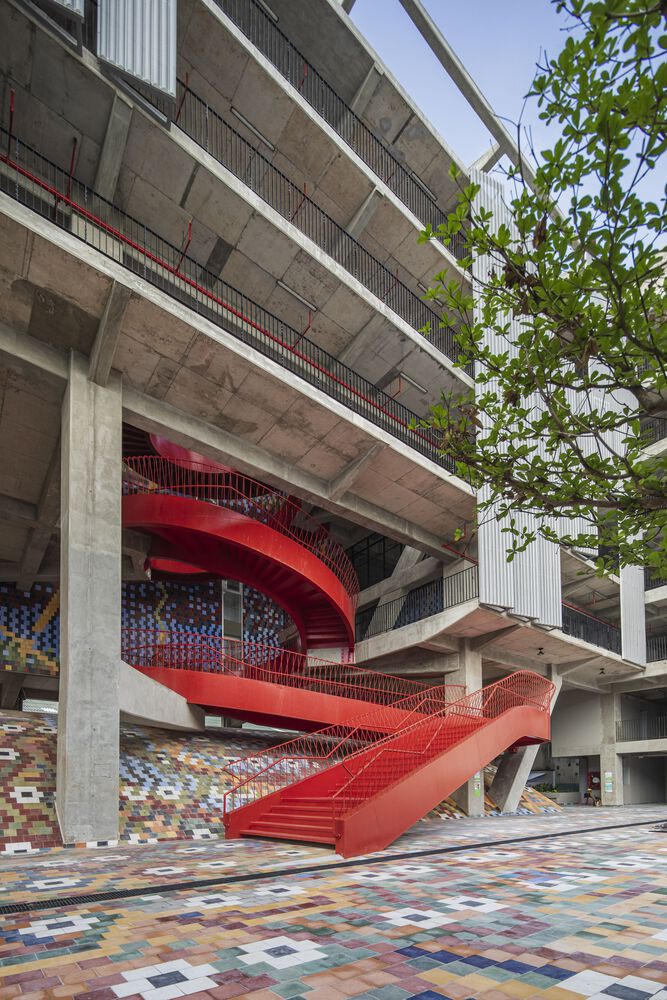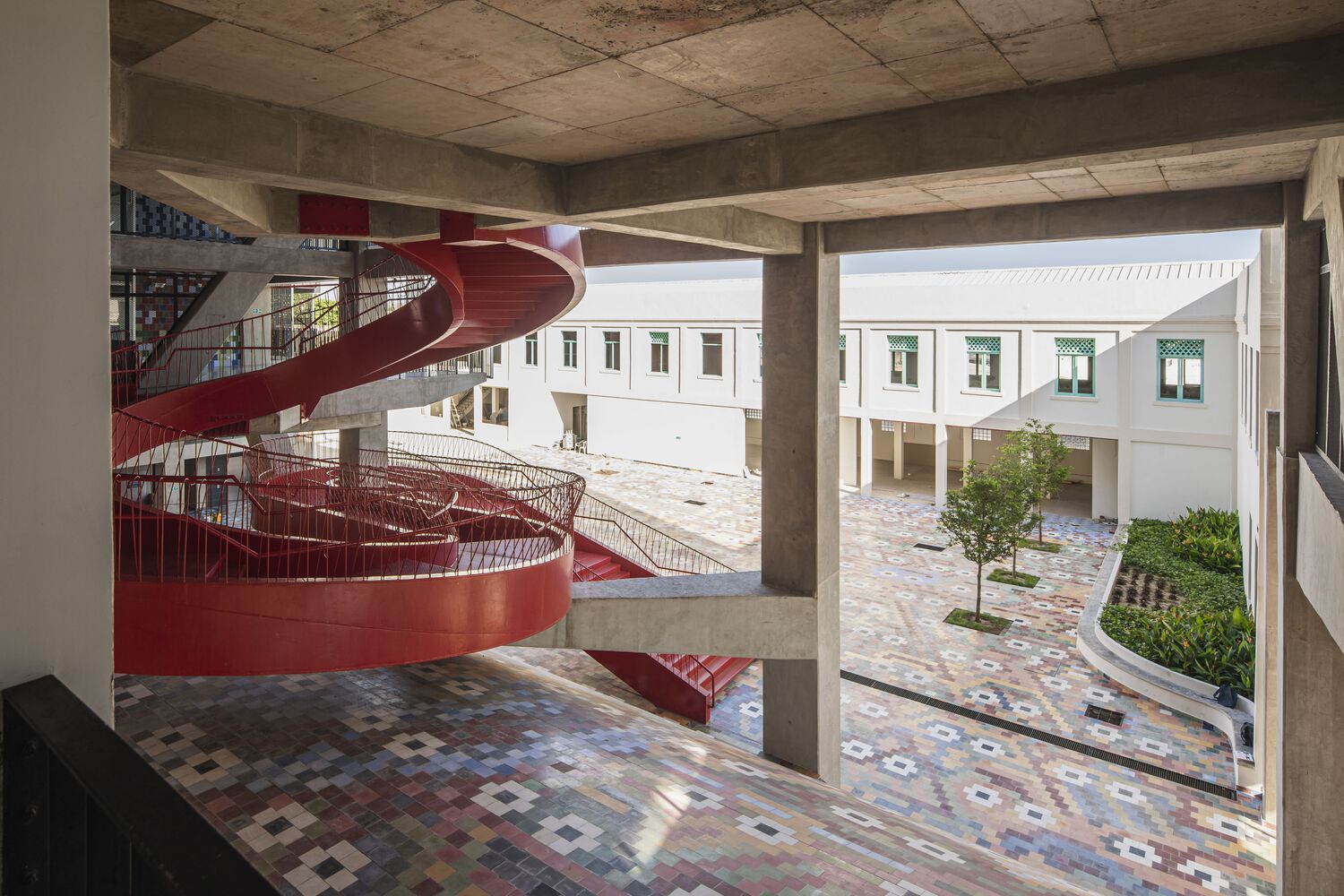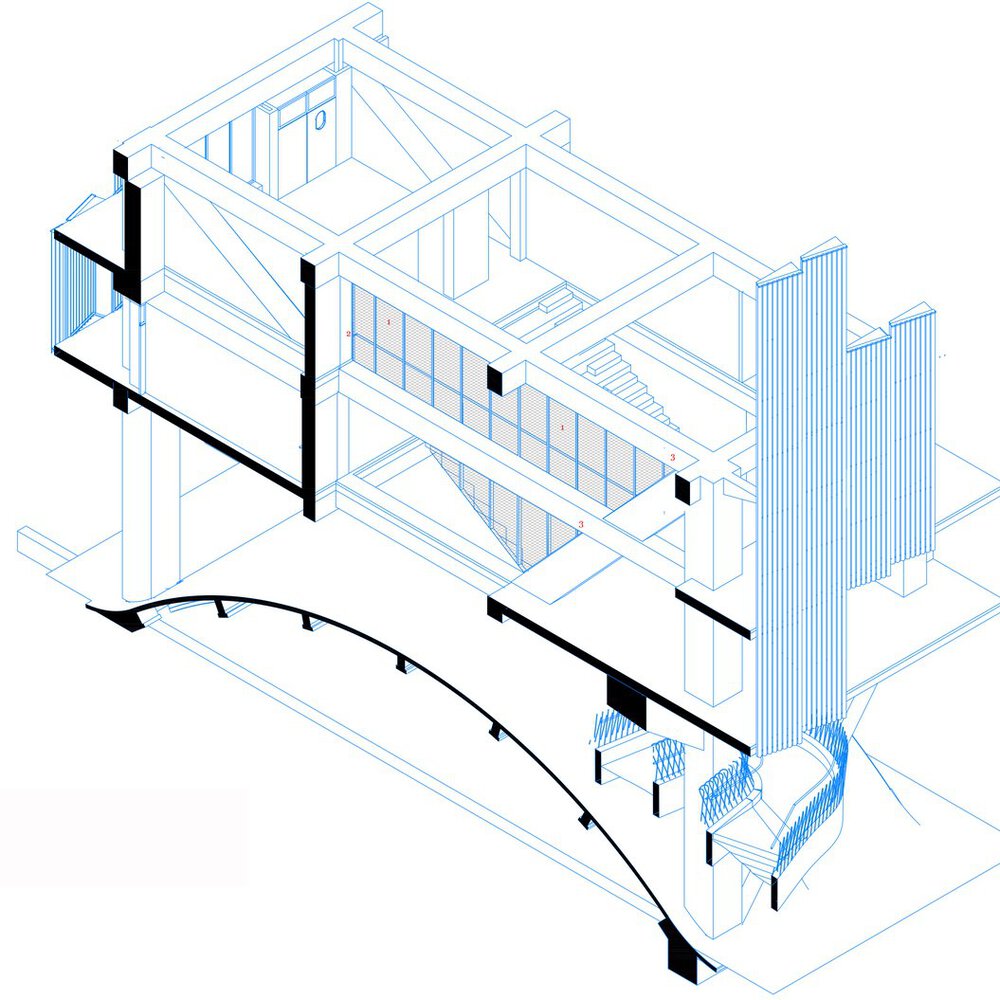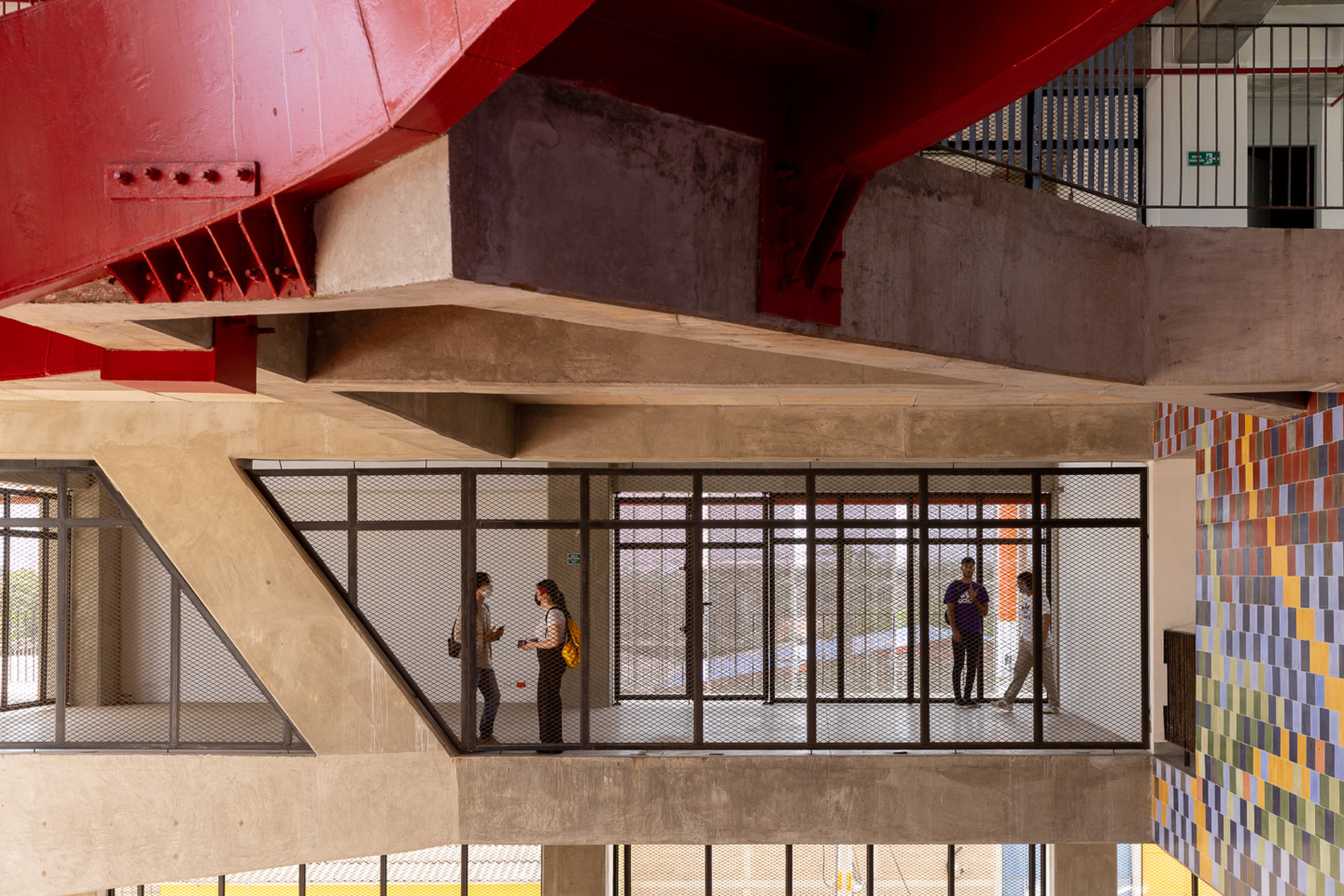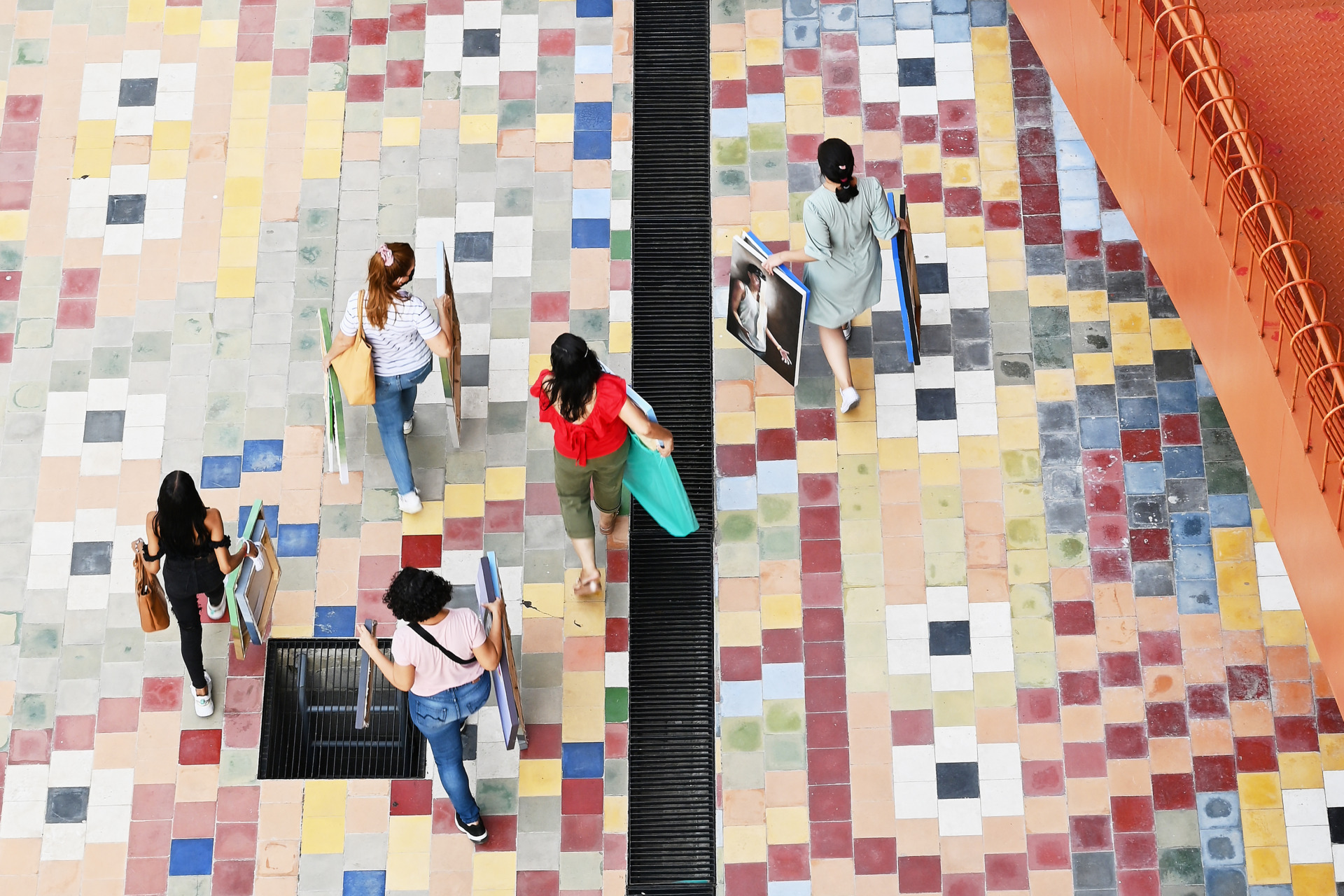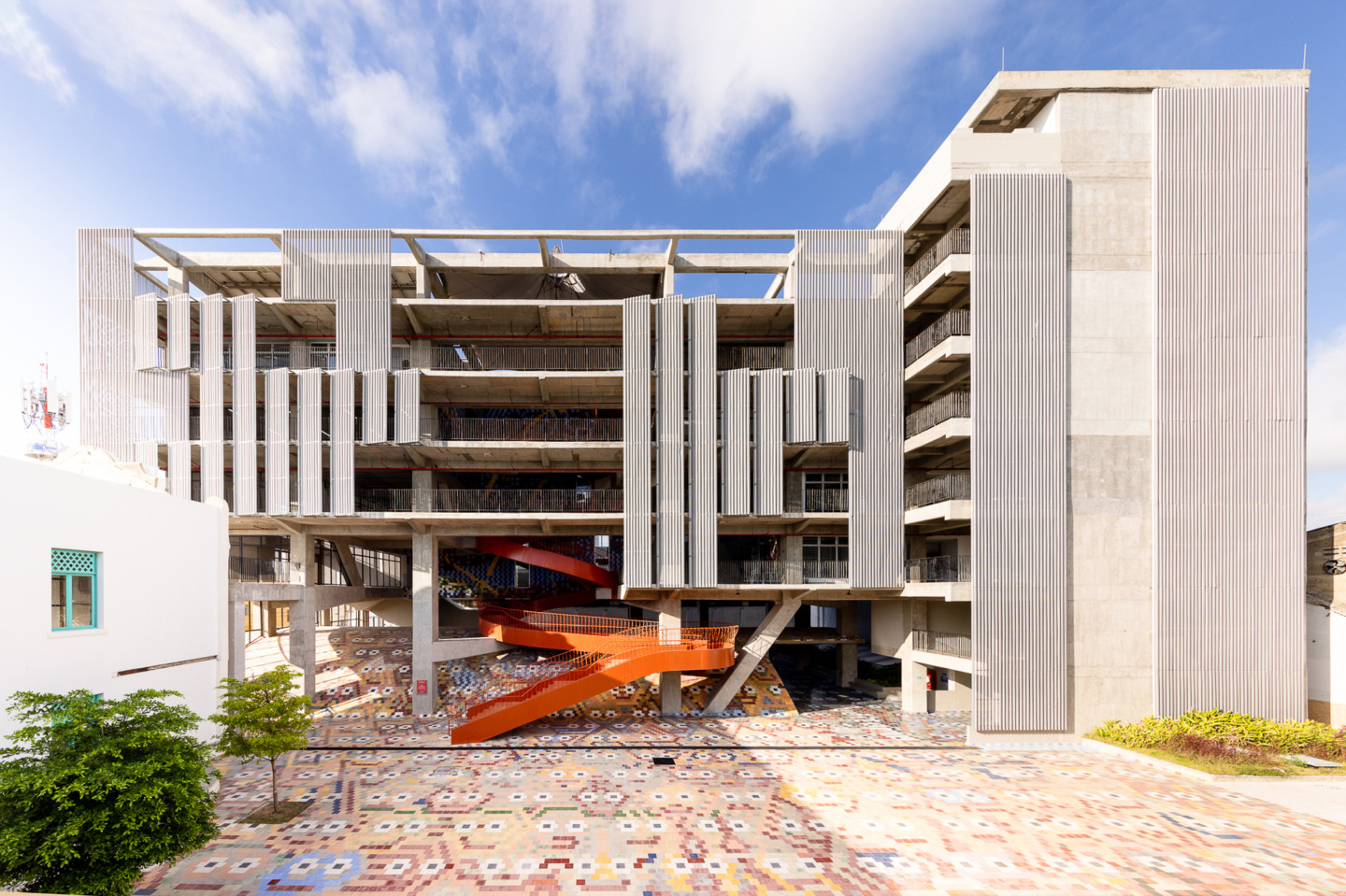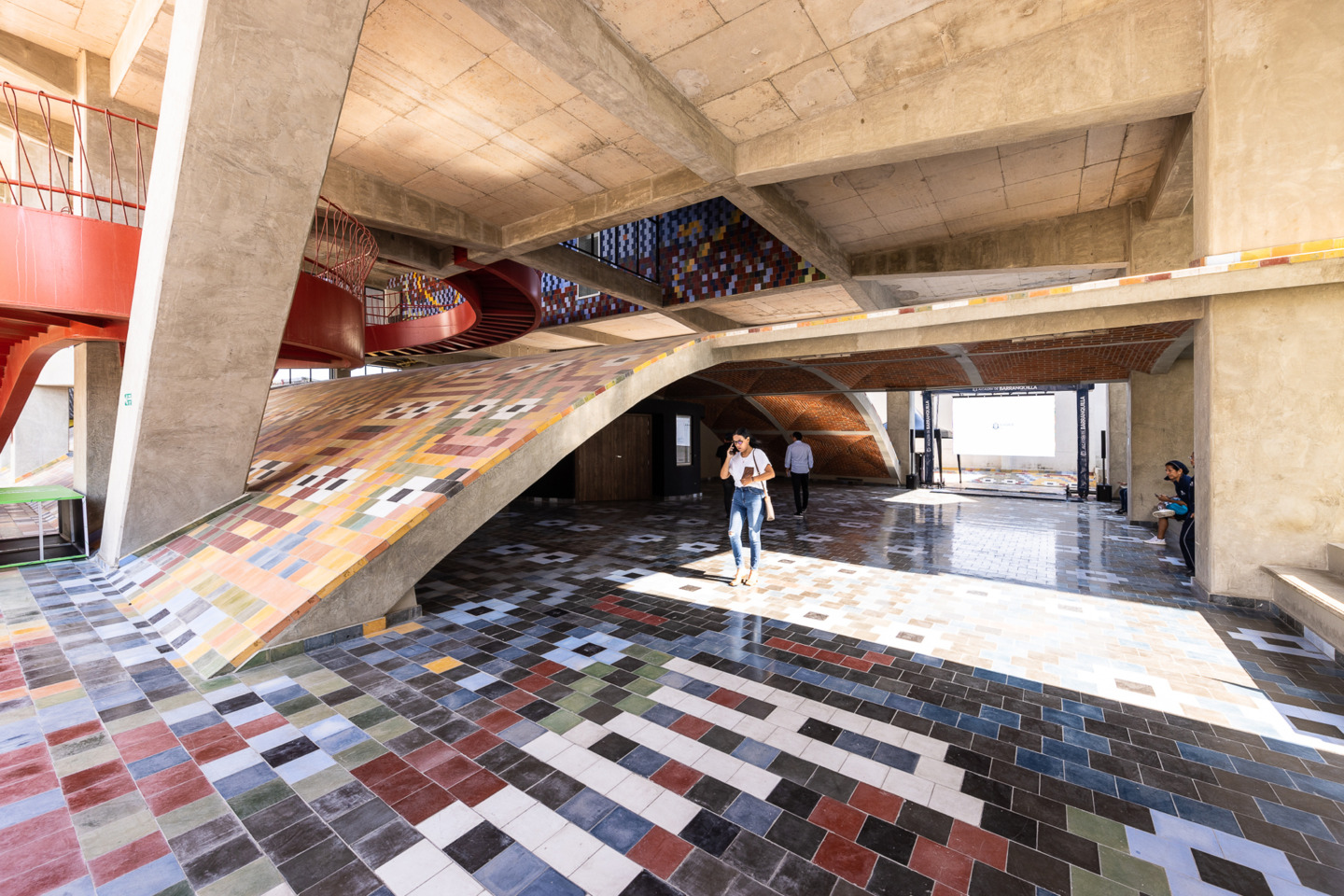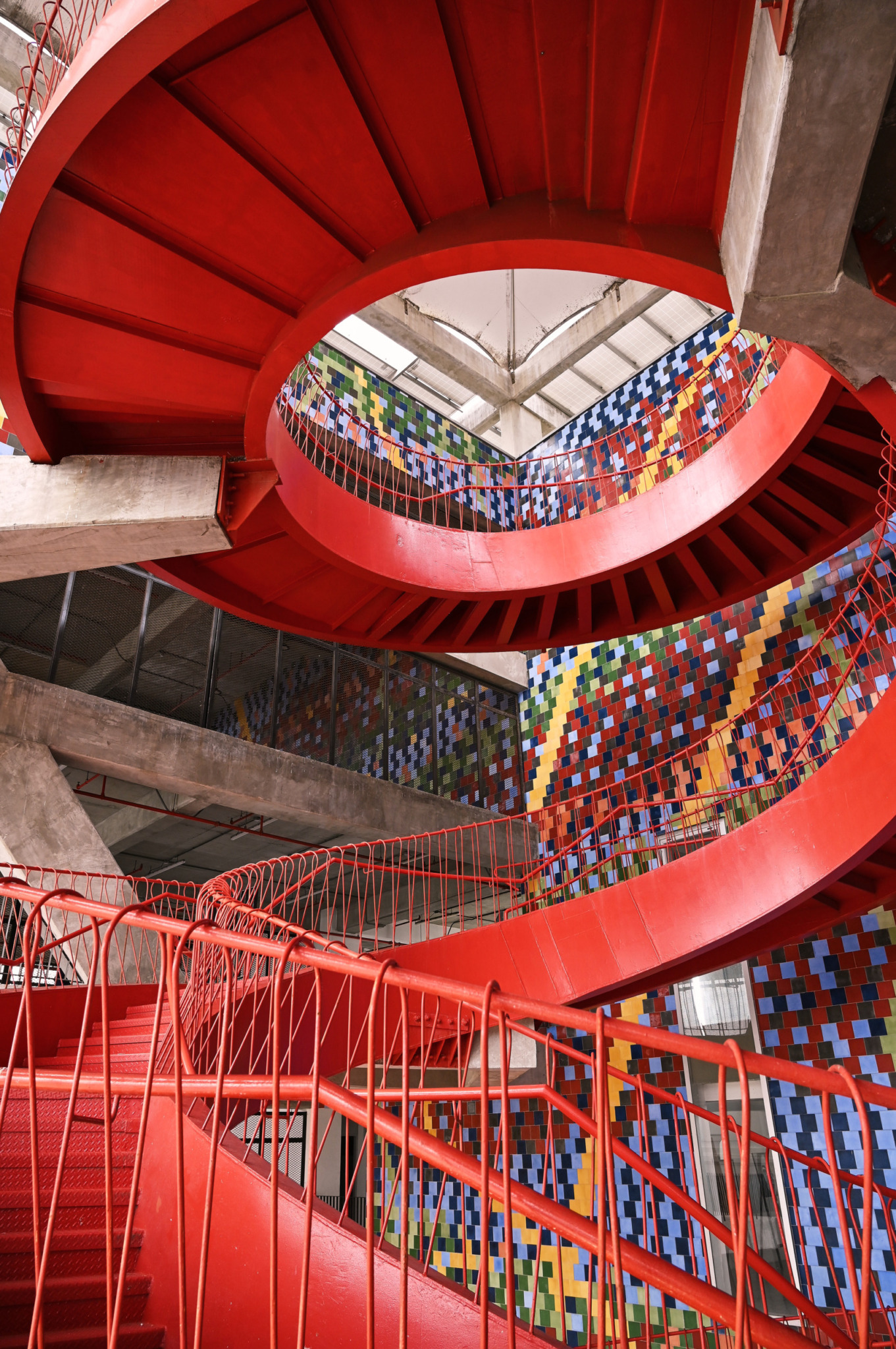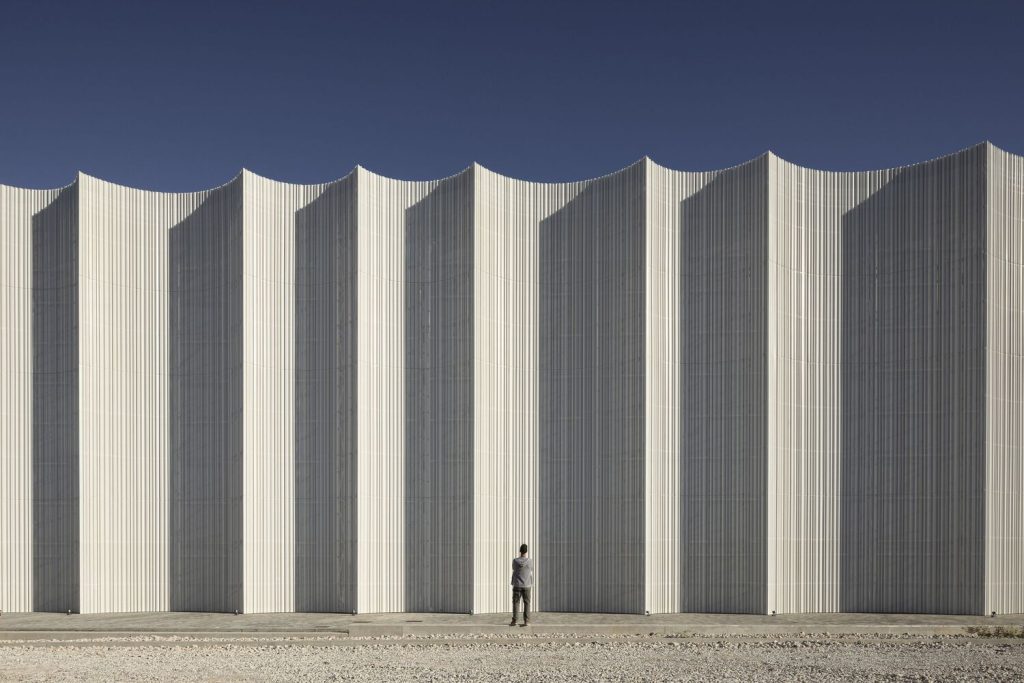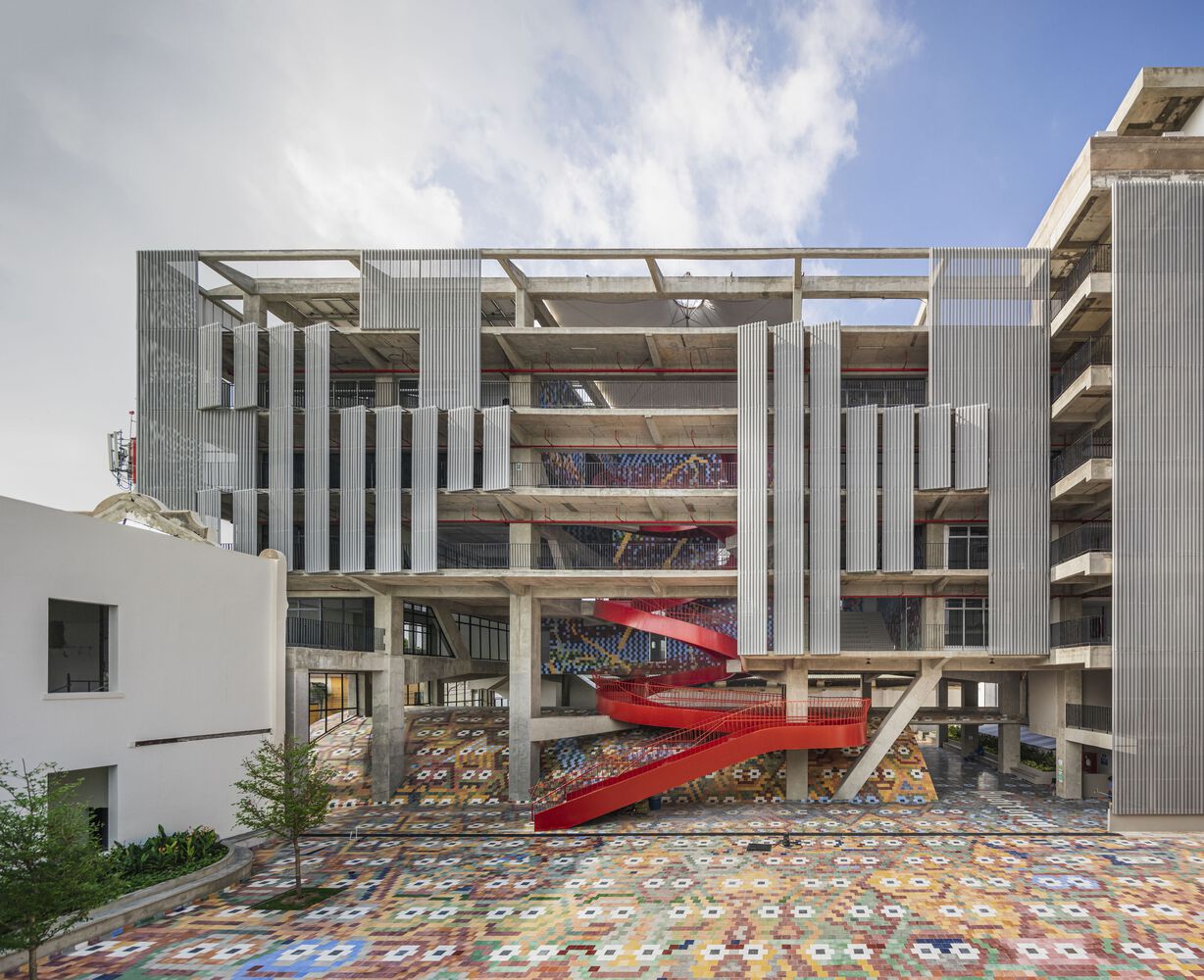
Fábrica de Cultura: School of Arts and Popular Traditions (EDA) / Urban-Think Tank Alfredo Brillembourg for IQD
The Fábrica de Cultura: School of Arts and Popular Traditions (EDA) complex in Barrio Abajo, a working-class neighborhood in Barranquilla, Colombia, is built within an abandoned Tobacco Factory. The addition of a new arts building in the courtyard of the old Factory creates a dynamic center for the Barrio. The Fábrica provides a maker space for 2,800 young people to learn creative arts and popular traditions centered around the culture of the UNESCO World Heritage Carnival of Barranquilla. Operated by the Municipality, the school offers arts and crafts education – in eleven disciplines: music, dance, sculpture, dressmaking, painting poetry, theater, food production, digital film, and audio techniques – to local residents, regardless of their social or economic background.
The design builds on vernacular patterns of the 1950s industrial architecture of the neighborhood and utilizes a strong concrete frame finished with local materials to create a creative framework of stacked covered and uncovered spaces that can be modified and reprogrammed by users over time. Fábrica de Cultura offers a flexible building prototype that could be replicated in other parts of Barranquilla and Colombia as a whole, using popular arts and culture as a strategy for inclusion throughout the region.

Why Barranquilla? Alfredo Brillembourg for IQD
Today, Barranquilla is the largest city in the northern Caribbean Coast region of Colombia, but it has always been a vibrant port city and thus a haven for migrants and refugees. In the nineteenth century, people fleeing the Ottoman Empire, Syro-Lebanese Arabs, and Jews made their way to Colombia via Barranquilla. Waves of immigrants from Germany, Poland, and Italy arrived during and immediately after World War I and World War II, when still more people came from the Middle East and Asia. Adding these to the existing indigenous and Spanish populations made Barranquilla uncommonly diverse, even by the standards of the largest coastal cities of the Americas.
The influx of immigrants and the migration of the rural population to the city – the latter a global phenomenon – has inevitably led to considerable growth and the demand for proposals to accommodate it in this city, known for its chaotic urban planning. In an increasing disparity of wealth and social standing, the vibrancy of traditional local markets has waned; residents with money prefer the supermarket chains and move about in private cars, eliminating the kinds of integration and interaction once generated by pedestrian access to public spaces.
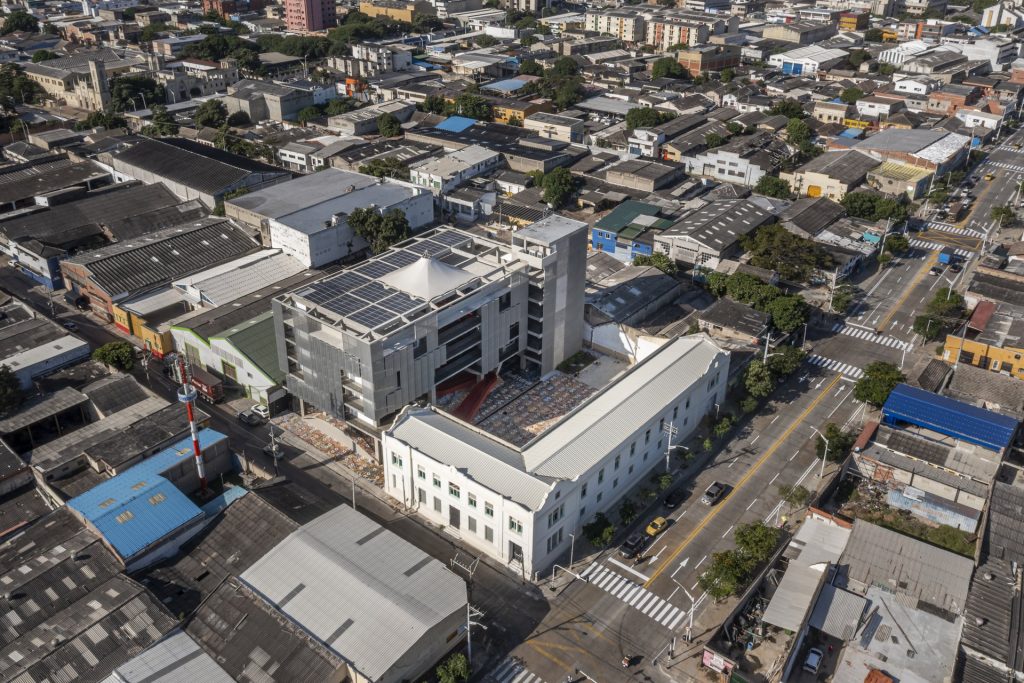
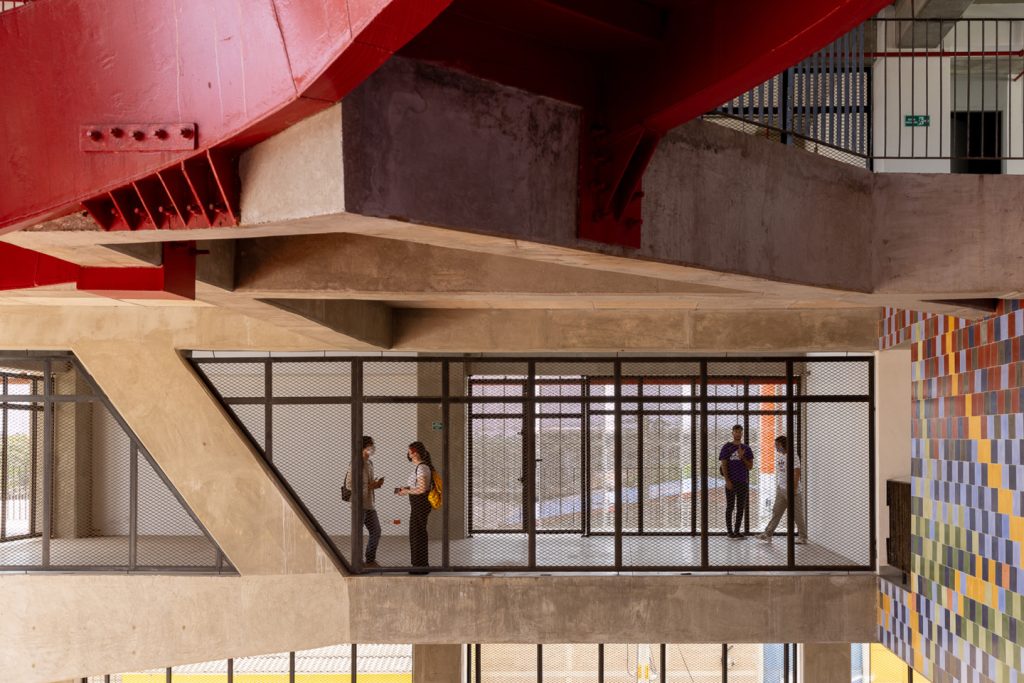
In these respects, Barranquilla resembled many of the cities in which we had tried to work. But there were some important differences. Although the people we met – various stakeholders in the city – were sharply divided about the specifics of the peace process, then underway, they agreed that peace was the essential goal. The other distinction, of even greater significance for us, is the Carnival of Barranquilla. The multicultural carnival, with traditions dating from the nineteenth century, is one of the most famous festivals in Colombia and second in size only to the carnival in Rio de Janeiro. Taking place over the course of four days, leading up to the beginning of Holy Month, Barranquilla’s carnival is so noteworthy that in 2002 the Colombian National Congress declared it a Cultural Patrimony of the Nation and, in 2003, UNESCO named it a Masterpiece of Oral and Intangible Heritage of Humanity.
As we saw it, the carnival was the single most unifying and inclusive event in Barranquilla, in many ways a model for integration and reconciliation among diverse, sometimes oppositional, populations. It is a citywide opportunity for cultural activism, an event – or series of events – that are simultaneously fictional and true, figurative and real. Because it is inherently theatrical, the participants are permitted to say and do what would otherwise be transgressive.
Quien lo vive, es quien lo goza That’s the motto of Barranquilla’s carnival: Those who live it are those who enjoy it. But because gozar has a secondary meaning, it might be even more accurate to say, those who live it are those who possess it. The carnival emerges from, is made by, and belongs to the residents of the city’s barrios; it is their display, an expression of who they really are and what they aspire to. And they live it throughout the yearlong preparations and productions. We spent two years researching the carnival, meeting with the organizers of the dances and music in their rehearsal spaces.
We visited gifted artists like Yino Marquez in his studio in the Barrio Abajo neighborhood. We talked with the choreographers and dance teachers in their open-air classrooms, saw the audio and video production facilities, visited the designers and tailors who make the costumes for the carnival king and queen. Despite the sophistication and complexity of efforts of many of the carnival groups and the role of carnival in Barranquilla’s culture, there were no formal spaces for the work. Artists, artisans, and performers were scattered all over the city, working and training in classrooms and empty roads and whatever disused spaces they could find. That gave us our purpose: to find a place we could turn into a school for carnival arts and crafts, preferably an abandoned industrial building we could convert.

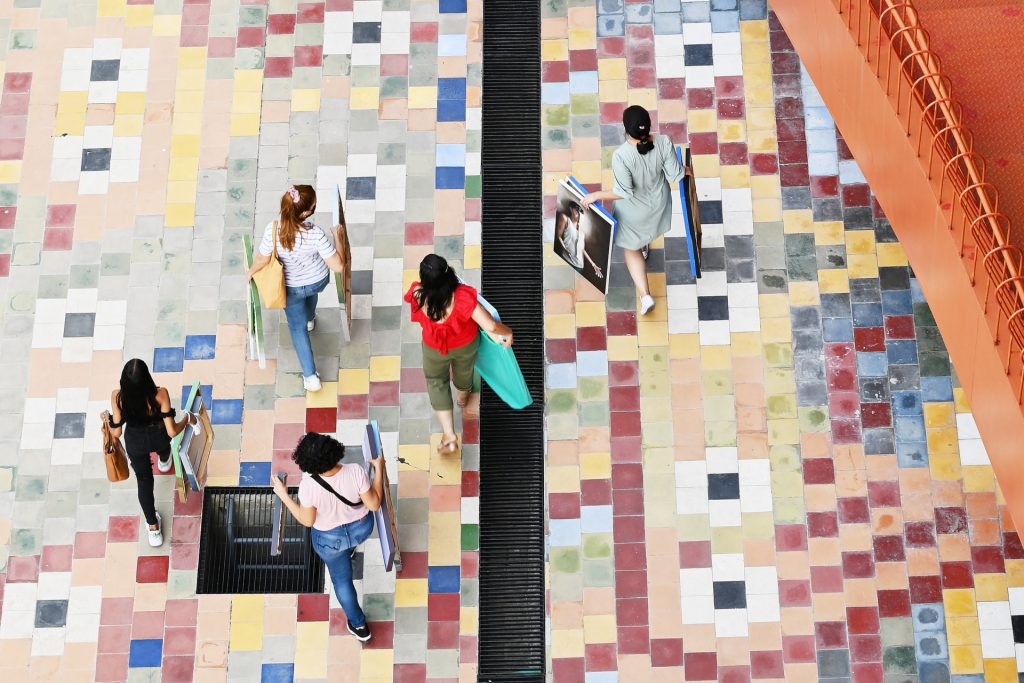
We had in mind a place where all the work that goes into the carnival could be housed, in a location where that activity could also serve as the engine for urban development and renewal. It would bring people together in their common endeavors and heighten the visibility of this cultural patrimony. Teaming up with the Mayor and local stakeholders, we identified the perfect site. Between Barrio Abajo and the old city center is an area once home to small industry and individual workshops, a district already targeted for urban renewal. There we found an old, abandoned tobacco factory, on a street that was being redesigned as an avenue. The building was acquired by the city, to be developed using municipal funds and the proceeds of the national lottery. It took us a year to understand what each of the arts did and needed: What kind of space? What should its dimensions be? What would be occupied full-time and what could be shared?
We designed an open concrete building, tied around the old building through a courtyard. The classrooms are flexible, and each performance space is given the required height and width. A semisunken auditorium, seating five hundred, is topped by a sequence of large, intersected Catalan brick vaults (below), a response to the smaller vaults in the old building. The open space between the top of the vaults, which rise only a couple of meters above grade, and the new building’s concrete platform serves as a kind of playground. To make the school sustainable and economically viable, the building uses natural ventilation; solar panels will provide power. The project had a breadth of support we have never had before. The then-mayor, Elsa Noguera in 2015, was enthusiastically on board, and the now Mayor Jaime Pumarejo inaugurated the new building in 2022 which the press reported extensively on, saying that it would support the emergence of new talent and provide professional training for the traditional arts that are central to Barranquilla’s culture.
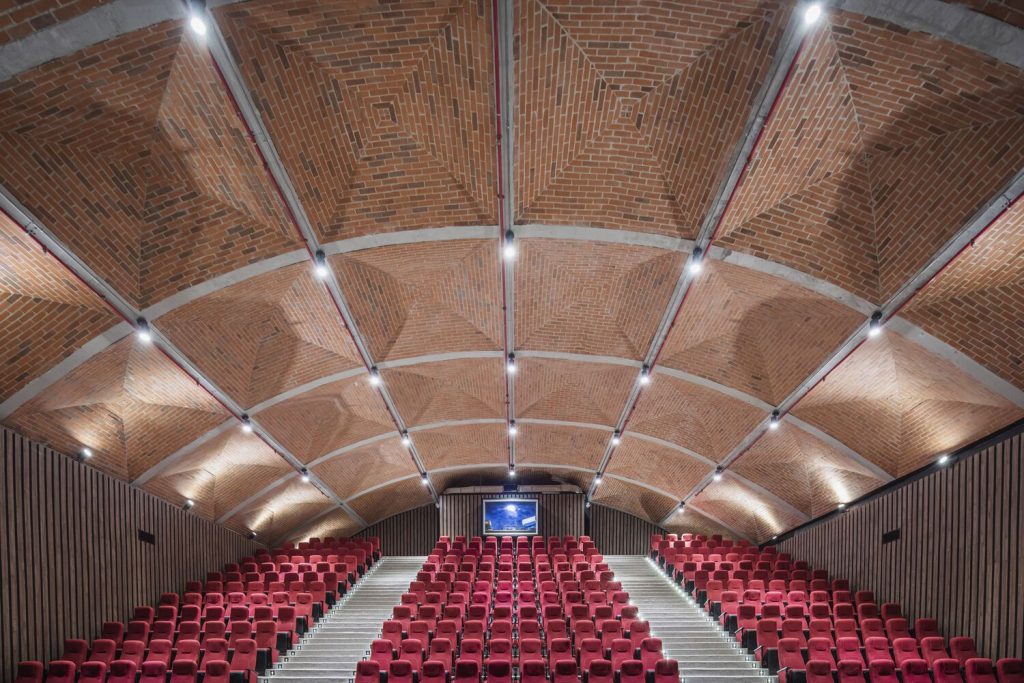
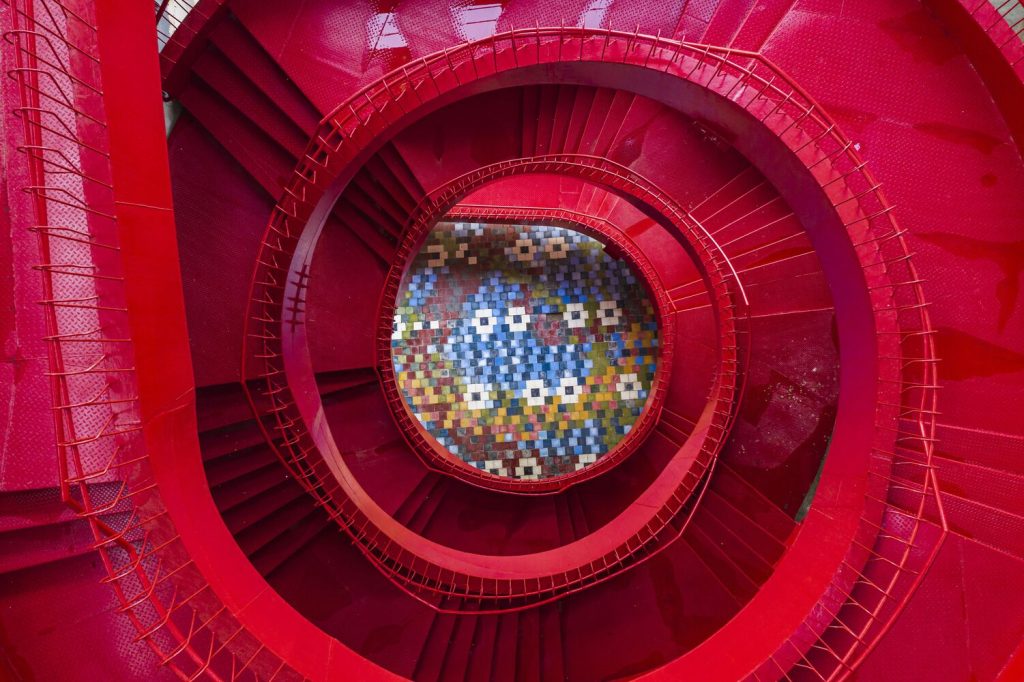
- Architects: Alfredo Brillembourg and Hubert Klumpner UTT@ETH Zurich
- Local Partner: Manuel Moreno (UniNorte) Sergio Chirivella (UniNorte)
- Area: 11,500 m²
- Year: 2014-2022
- UTT@ETH Project Architect: Diego Ceresuela
- Additional U-TT Team: Pablo Levine, Blanca García-Gardelegui, Alejandro Jaramillo, Cristian Zabalaga, Lucas Lerchs, Diogo Figueiredo, Lea Rüfenacht, Marie Grob, Sofia Avramopoulou, María Paula Celia, Melanie Imfeld
- Structural Engineering: Andrés Guzmán, Osvaldo Guzmán (UniNorte)
- Design studies Vaulted Structures: Block Research Group
- Design studies Bioclimatic Systems: Arno Schlueter
- Graphic Design: Atelier Intégral Ruedi and Vera Baur
- General Contractor: Consorcio EDA Caribe 2018
- Photos: Copyright Klumpner Chair of Architecture and Urban Design ETHZ / Alejandro Arango and Luis Bernardo Cano. Gregory Alonso
